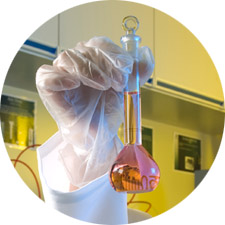|
|
Synthetic Fragrances and the Environment
|
|
|
|
|
|
This article is a direct comparison between the natural and synthetic incense on the market today. Although we're obviously more partial to the natural stuff ourselves, we've done our best to provide you with unbiased and honest page. So whether you're a little skeptical towards natural scents or have heard some troubling things about synthetic fragrances, we've done our best to answer any questions you might have.
We're going to be looking at what "pure" really means, the most common ingredients in both varieties, their effect on the environment and, most importantly, how good they actually are for your health.
|
|
|
|
|
|
|
 |
Synthetic Scent Compounds - As we mentioned a little higher up, the vast majority of synthetic scent sompounds are obtained from petroleum and natural gases. A process called fracking is the most popular method for obtaining some of these resources. This is where fracking fluid, a mixture of water, sand and over 600 chemicals, including mercury, uranium and radium, is pressure blasted into the earth to release trapped deposits of gas. The average fracking pumps over 40,000 gallons of non-biodegradable chemicals into the earth and atmosphere to contaminate our air and water. Only 30% - 50% of these chemicals are ever recovered, with the rest left underground. Studies have actually shown many of these chemicals present in the drinking water of populations near fracking sites. The average fracking also requires up to 400 tanker trucks to ferry around the 1 - 8 million gallons of water necessary. This is a massive amount of additional CO2.
|
|
|
|
 |
Synthetic Scent Compounds - As we mentioned a little higher up, the vast majority of synthetic scent sompounds are obtained from petroleum and natural gases. A process called fracking is the most popular method for obtaining some of these resources. This is where fracking fluid, a mixture of water, sand and over 600 chemicals, including mercury, uranium and radium, is pressure blasted into the earth to release trapped deposits of gas. The average fracking pumps over 40,000 gallons of non-biodegradable chemicals into the earth and atmosphere to contaminate our air and water. Only 30% - 50% of these chemicals are ever recovered, with the rest left underground. Studies have actually shown many of these chemicals present in the drinking water of populations near fracking sites. The average fracking also requires up to 400 tanker trucks to ferry around the 1 - 8 million gallons of water necessary. This is a massive amount of additional CO2.
|
|
|